Home Garden
Urban Beekeeping: Sweet Sustainability at Home
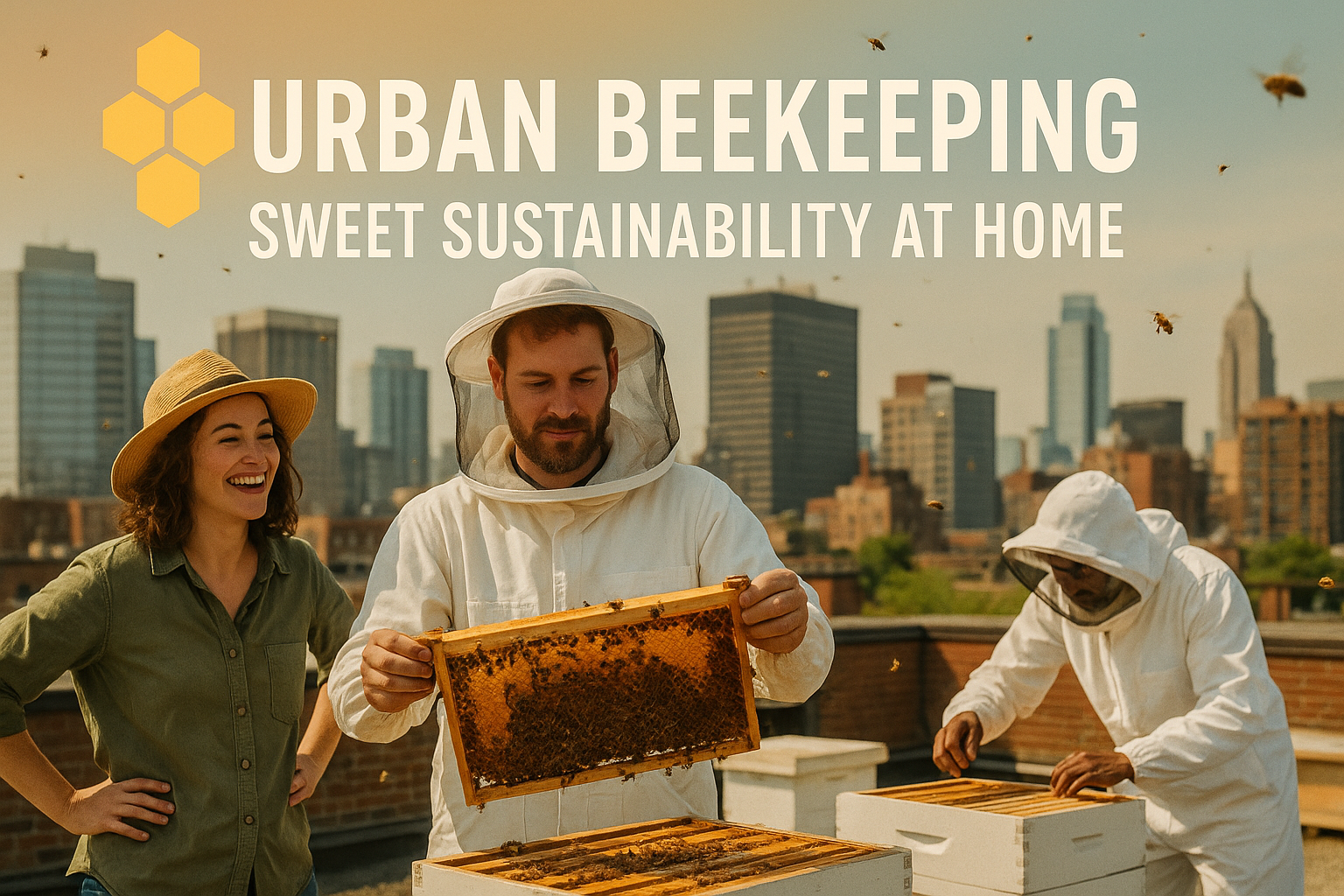
Introduction
Imagine stepping onto your balcony and seeing a hive buzzing with life. Urban beekeeping brings nature’s sweetness to city living. This trend lets city dwellers practice urban beekeeping and support sustainable gardening. Instead of searching for honey at a store, you harvest your own. Bees pollinate nearby flowers, gardens, and parks. This simple action supports pollinator-friendly spaces in crowded areas.
In the United States in 2025, more people want eco-friendly hobbies. Keeping bees on rooftops, balconies, and small yards fits the bill. It offers fresh honey, fosters wildlife, and connects you with nature. Whether you live in a tall apartment building or a small house, you can join the movement. This article will explain what urban beekeeping is and why it matters. We will cover the benefits, how to get started, practical tips, and how to keep urban bees healthy. You will also find a helpful table comparing hive types. By the end, you will see how easy and rewarding it can be to welcome these busy insects into your urban life.
What Is Urban Beekeeping?
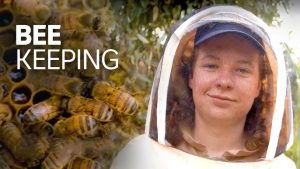
Image by: Yandex.com
Urban beekeeping means keeping honey bee colonies in a city or town. Rather than placing hives on farms or in rural areas, beekeepers set up hives on rooftops, balconies, or small plots of land. These bees collect nectar from urban flowers, trees, and gardens. They return to the hive and make honey.
Unlike keeping pets, beekeeping requires nurturing a small community of insects. Bees work together to build comb, store honey, and care for larvae. A beehive can fit into a space as small as a 1-foot square box. Modern hives often use simple wooden boxes called Langstroth hives. Some urban beekeepers use smaller designs like top-bar hives or flow hives for easy honey extraction.
Live in urban areas offers diverse flowers from parks, street trees, and backyard gardens. Bees find pollen and nectar from lavender, sunflowers, clover, and even flowering trees. Because cities often have fewer pesticides than farms, urban honey can be pure and flavorful. Urban beekeeping also educates neighbors about nature, helps gardens thrive, and supports local ecosystems.
Why Urban Beekeeping Matters

Image by: Yandex.com
Keeping bees in the city supports many goals at once. Here are key reasons why urban beekeeping is important:
- Supports Pollinators: Bees pollinate most fruits, vegetables, and flowers. In cities, green spaces can be limited. Urban hives help maintain pollinator populations. This benefits community gardens, parks, and local farms.
- Produces Local Honey: Urban beekeepers harvest fresh, local honey. Each batch reflects the unique plants in the neighborhood. Local honey can help with seasonal allergies by exposing people to local pollen.
- Builds Green Spaces: Bees need flowers. Urban beekeepers often plant pollinator gardens around hives. This adds color to streets and attracts other beneficial insects like butterflies and ladybugs.
- Educates the Community: Beekeeping teaches people about the urban environments, biology, and sustainability. Schools and community groups often invite beekeepers to show hives. This hands-on education inspires a love of nature.
- Promotes Sustainable Living: Keeping bees fits into a sustainable gardening lifestyle. Making your own honey reduces plastic packaging and transport emissions. Plus, caring for bees encourages eco-friendly habits like composting and planting native flowers.
- Enhances Mental Wellbeing: Interacting with beehives can be calming. Watching bees work improves focus and reduces stress. Many beekeepers say time spent near hives is a form of meditation.
Getting Started with Urban Beekeeping

Image by: Yandex.com
Before bringing bees home, plan carefully. Street beekeeping in a busy city requires extra steps. Follow these guidelines:
1. Check Local Laws
Each city has rules about beekeeping. Some areas allow a limited number of hives per property. Others require registering hives. Research local ordinances online or contact local beekeeping associations. Make sure you comply with safety and zoning requirements.
2. Choose a Suitable Location
Hives need afternoon sun and some shade in the hottest hours. A rooftop, balcony, or backyard corner can work. Make sure people and pets do not walk too close to hive entrances. A hedge, fence, or tall planter can guide bee flight paths upward and away from walking areas.
3. Select the Right Hive Type
Common hive choices include Langstroth hives, top-bar hives, and flow hives. Langstroth hives are versatile and have removable frames for inspection. Top-bar hives use horizontal bars where bees build comb naturally. Flow hives let you harvest honey directly without opening the hive. Consider space, cost, and ease of use when choosing.
4. Buy Quality Equipment
Essential items include protective clothing (veil, gloves, suit), hive tool, smoker, and bee brush. Get a sturdy hive stand to keep hives off the ground. Use food-grade plastic or wooden frames. Ensure your equipment is sanitized to prevent disease.
5. Get Bees from a Reputable Source
Order nucs (nucleus colonies) or packaged bees from a local beekeeper or reputable breeder. Nucs come with a small colony on frames, easy to install in your hive. Packaged bees are loose in boxes and need time to settle. Local bees adapt better to climate and local plants.
6. Learn Bee Biology and Behavior
Understanding basic bee biology helps you care for your hive. Learn about queen roles, worker tasks, and seasonal cycles. Know signs of queen health, brood patterns, and honey flow times. Join a local beekeeping club or take an online course.
7. Prepare Food and Water Sources
In early spring, bees may need sugar syrup until flowers bloom. Also provide a shallow water source with floating cork pieces or stones so bees can land safely. This helps bees cool the hive and feed larvae.
8. Start with One or Two Hives
Don’t overwhelm yourself. Beginning with a single hive helps you learn tasks like inspections, feeding, and pest control. As you gain confidence, consider adding more hives.
Caring for Your Urban Hive
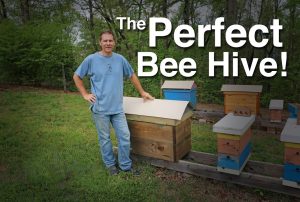
Image by: Yandex.com
Caring for bees involves regular checks and seasonal tasks. Below are steps to maintain a happy colony:
- Regular Hive Inspections: Open your hive every 7–10 days in spring and summer. Look for healthy brood (eggs, larvae, pupae) in neat circles. Check for signs of disease or pests like varroa mites. Ensure the queen is present and laying eggs. Also check honey and pollen stores.
- Provide Feed When Needed: In early spring or late fall, supplement with sugar syrup or pollen patties if nectar flow and pollen are scarce. Do not overfeed; bees need natural sources to remain strong. Feed only when necessary to help colony growth.
- Manage Pests and Diseases: Monitor mites, wax moths, and foulbrood. Use gentle treatments like thymol strips or organic acids for varroa mites. Keep equipment clean and rotate old frames. An integrated pest management approach reduces harm to bees and the environment.
- Harvest Honey Responsibly: Harvest honey only when frames are mostly capped (covered with wax). Leave enough honey—about 10–15 pounds—for the bees to survive winter. Use a bee brush to gently remove bees from frames. Extract honey using a clean extractor.
- Winter Preparations: In fall, reduce hive entrance size to keep out pests and reduce drafts. Add insulation or a hive wrap if your region gets cold. Feed bees so they build up honey stores. Place hives in a location protected from strong winds and heavy snow.
- Harvest Wax and Propolis: Besides honey, you can collect beeswax and propolis. Beeswax makes candles, lip balms, and natural polish. Propolis is the resin bees use to seal cracks. It has antimicrobial properties and can be made into tinctures.
Tips for Urban Beekeeping Success

Image by: Yandex.com
Experience helps, but these tips can fast-track success for new urban beekeepers:
- Join a Local Beekeeping: Club Meeting other beekeepers gives you shared advice and community support. You can observe their hives and learn hands-on techniques. Many clubs offer group hive inspections and mentoring.
- Maintain Good Neighbor: Relations Inform neighbors about your beekeeping plans. A small number of hives does not pose a major risk if proper safeguards are in place. Offer jars of honey as goodwill gestures to show your bees are gentle and beneficial.
- Use Native Plants: Plant flowers suited to your region. Native wildflowers, herbs, and shrubs bloom in sequence, providing bees with a steady food supply from spring through fall. This reduces the need for supplemental feeding.
- Keep Records: Track hive inspections, feeding, treatments, and honey harvests in a simple notebook or app. Notes help you identify patterns such as low honey yields or pest issues so you can improve next year.
- Learn from Online Resources: Websites like Bee Informed Partnership or local extension services share articles and videos on disease management, queen rearing, and more advanced topics. Online forums let you ask questions and learn from global beekeepers.
- Plan for Swarm Prevention: Swarming is when a branch of the colony splits off to form a new hive. Learn to spot signs (like queen cells) and perform splits before a full swarm. This keeps your colony healthy and avoids conflicts with neighbors.
- Honey Extraction Workshops: Attend workshops on honey extraction and processing. You will learn to use an extractor safely, filter honey properly, and check for moisture content. Proper technique ensures pure, long-lasting honey.
Comparative Table: Hive Types in Urban Beekeeping
| Hive Type | Description | Pros | Cons |
|---|---|---|---|
| Langstroth | Stacked boxes with removable frames | Easy to inspect, widely used, modular | Bulkier, heavier, more expensive |
| Top-Bar | Horizontal bars where bees build natural comb | Simple design, close to natural hive | Harder to inspect, lower honey yield |
| Flow Hive | Modified Langstroth with tap & flow system | Easy honey harvesting, less disturbance | Higher cost,complex parts to maintain |
| Warre | Vertical boxes with fixed combs | Low maintenance, insulated | Harder to harvest, limited module options |
| Nuc | Small nucleus colonies for starting new hives | Ideal for beginners, less risk | Limited honey production, small space |
Conclusion
Urban beekeeping is a simple yet powerful way to practice sustainable living at home. By setting up a hive on your balcony, rooftop, or backyard beekeeping, you help save local bee populations and create pollinator-friendly spaces. You also harvest pure, local honey and learn about nature firsthand. With the right research, legal permits, and mindful consumption, keeping bees in the city is safe and rewarding. Just follow best practices, choose the right hive type, and engage with your community. As cities grow, urban beekeeping will play a vital role in making green open spaces thrive, connecting people with nature, and ensuring future generations enjoy healthy gardens and fresh honey.
Call to Action
Ready to start your urban beekeeping journey? Visit our website for beginner guides, hive kit recommendations, and local beekeeping club contacts. Take the first step toward sweet sustainability set up your own city hive today!
Home Garden
Say Goodbye to Pine Sol and Make Your Own Natural
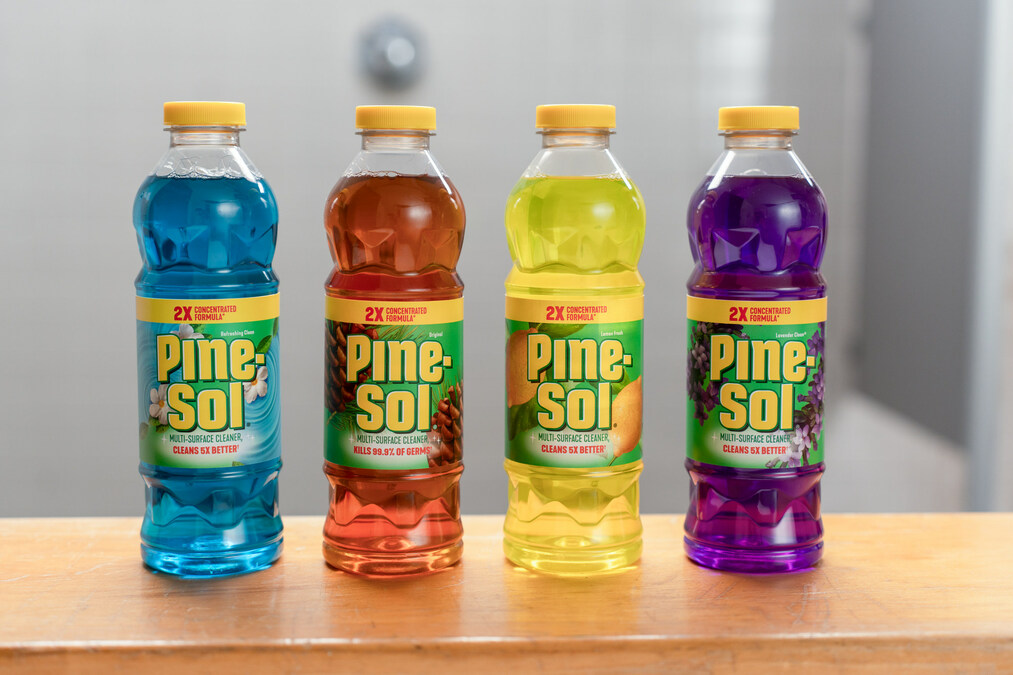
Introduction
Many people rely on commercial cleaners like Pine Sol to keep their homes sparkling clean. While these products work well, they often contain harsh chemicals that can irritate your skin, damage surfaces, and harm the environment. Making your own natural cleaner at home is safer, cost-effective, and surprisingly easy. With a few simple ingredients, you can create a solution that cleans just as well, smells fresh, and keeps your home healthy. This article will guide you through easy DIY recipes and tips to replace Pine Sol naturally.
Why Choose Natural Cleaners
Natural cleaners are made from ingredients that are safe, non-toxic, and environmentally friendly. Common components include vinegar, baking soda, essential oils, and lemon juice. Unlike chemical-based cleaners, natural alternatives reduce the risk of allergies, respiratory issues, and chemical exposure. They are also biodegradable, meaning they won’t pollute water systems or harm wildlife. Choosing natural cleaners is not only better for your family but also contributes to a cleaner, healthier planet.
Benefits of Making Your Own Cleaner
Making your own cleaner at home has several advantages. First, it saves money. Ingredients like vinegar, baking soda, and lemon are inexpensive and often already in your kitchen. Second, it allows customization. You can add your favorite essential oils for scent or adjust the strength of the solution based on the cleaning task. Third, it eliminates harsh chemicals, making your home safer for children and pets. Finally, it reduces plastic waste because you can reuse spray bottles and containers multiple times.
Essential Ingredients for DIY Natural Cleaners
Before making your own cleaner, it helps to know which ingredients are most effective:
- Vinegar: A natural disinfectant that removes grease and stains.
- Baking Soda: Excellent for scrubbing and deodorizing surfaces.
- Lemon Juice: Contains citric acid that brightens surfaces and leaves a fresh scent.
- Essential Oils:Oils like tea tree, lavender, or eucalyptus add antibacterial properties and pleasant aromas.
- Castile Soap: A gentle, plant-based soap perfect for general cleaning.
These ingredients can be combined in various ways to create a versatile cleaner for multiple surfaces.
Simple All-Purpose Cleaner Recipe
Here’s an easy all-purpose cleaner you can make in minutes:
- 1 cup of water
- 1 cup of white vinegar
- 10 drops of lemon or tea tree essential oil
Mix the ingredients in a spray bottle, shake well, and use it to clean counters, sinks, and shelves. This solution effectively removes dirt and bacteria while leaving a fresh, natural scent.
1. Natural Floor Cleaner
Floors often need a stronger solution, but it can still be natural. Here’s a simple recipe:
- 1 gallon of warm water
- 1/2 cup of white vinegar
- 1 tablespoon of castile soap
Mix all ingredients in a bucket. Mop your floors as usual and enjoy clean, streak-free results. This solution works well on tile, vinyl, and sealed hardwood floors, but always test a small area first.
2. Grease-Cutting Kitchen Cleaner
Kitchens often accumulate grease and grime. To tackle these areas, use:
- 1/2 cup baking soda
- 1/4 cup white vinegar
- 2 cups warm water
- 5 drops of lemon essential oil
Mix the ingredients in a spray bottle. Spray on greasy surfaces, let it sit for a few minutes, and wipe clean. Baking soda helps scrub away tough stains while vinegar cuts through grease naturally.
3. Bathroom Cleaner for a Sparkling Shine
Bathrooms need disinfecting without harsh chemicals. Try this recipe:
- 1 cup white vinegar
- 1 cup water
- 10 drops tea tree essential oil
- 5 drops lavender essential oil
Combine in a spray bottle and use on sinks, tubs, and toilets. Vinegar disinfects, while essential oils provide antibacterial benefits and leave a pleasant scent. This natural formula can help reduce mold and mildew growth.
Tips for Using DIY Cleaners Safely
Even natural cleaners should be used carefully. Here are some tips:
- Always label your bottles clearly.
- Store out of reach of children and pets.
- Test a small area on delicate surfaces before full use.
- Shake the mixture before each use for consistent results.
- Use vinegar-based cleaners away from natural stone surfaces like marble to prevent damage.
Why Natural Cleaners Are Better for Your Health
Chemical cleaners often contain ingredients that can irritate skin, eyes, and lungs. Frequent exposure can cause headaches, allergies, or long-term health issues. Natural cleaners avoid these risks and provide a safer option for daily cleaning. They are particularly beneficial for families with children, elderly members, or pets, reducing the chance of accidental chemical exposure.
Environmental Benefits
Using natural cleaners also protects the environment. Commercial cleaners can contain phosphates and other chemicals that pollute water and harm aquatic life. By switching to plant-based ingredients, you reduce your household’s environmental footprint. Homemade cleaners also reduce packaging waste because you can reuse bottles repeatedly. Small changes like this contribute to a healthier planet over time.
Expanding Your DIY Cleaning Routine
Once you get comfortable with basic recipes, you can experiment with other DIY cleaners:
- Glass Cleaner: Water, vinegar, and a few drops of essential oil for streak-free windows.
- Furniture Polish: Olive oil and lemon juice to clean and shine wood surfaces.
- Air Freshener: Baking soda, water, and essential oils to deodorize rooms naturally.
These recipes make it easy to replace chemical products with natural alternatives throughout your home.
Clean Smarter, Live Greener
To live a life untainted by toxins doesn’t require you to break the bank on “eco” brand goods. With some ingredients that nature provides and a little do-it-yourself spunk, you’re in control of what goes into your cleaning formulas, just like you are with your cosmetics and food. Take it slow, take it in small steps, and you will soon realize how much better a green home truly is. Your body, your home, and the earth will all thank you.
Conclusion
Say goodbye to Pine Sol and make your own natural cleaner at home for a safe, effective, and eco-friendly alternative. With ingredients like vinegar, baking soda, lemon juice, and essential oils, you can create solutions for every part of your home, from counters to floors to bathrooms. Homemade cleaners are cost-effective, customizable, and free from harsh chemicals, making them ideal for families and pets. Switching to natural cleaning not only protects your health but also benefits the environment, helping you maintain a clean, healthy, and sustainable home.
Visit onegreenplanet.org and download the Food Monster App .
Home Garden
Spire Building Supplies: Quality Materials for Every Project

Introduction
When it comes to building or renovating, choosing the right supplier for doors, windows, flooring, and more isn’t just about aesthetics it’s about reliability, performance, and value. Spire Building Supplies, based in Grand Prairie, Texas, has positioned itself as a trusted partner for contractors, developers, and homeowners alike, offering premium materials, expert service, and competitive pricing.
A One‑Stop Shop for Building Materials
Spire Building Supplies makes sourcing construction materials simple and efficient. Their product lineup includes:
- Interior and exterior doors, from modern flush doors to glass-insert designs
- A wide variety of windows, designed for thermal performance and ease of installation
- Flooring options to suit different styles and functional needs
- Cabinets and accessories to round out their offering
This breadth of inventory means Spire can serve a broad customer base from large-scale residential projects to commercial builds and smaller home upgrades.
Why Builders and Designers Choose Spire
- Trade-Friendly Pricing & Support: Spire understands the needs of construction professionals. They offer bulk-ordering capabilities, custom quotes, and trade-level support to ensure builders get what they need without hassle.
- Ready-to-Deliver Stock: One of Spire’s standout promises is their fast delivery popular items are reportedly available within 1–2 days. For busy projects, that kind of lead time can make a big difference.
- Expert Customer Service: Their team is available seven days a week, which means timely support for both trade professionals and homeowners.
- Strong Product Performance: Their windows and doors are built for performance, optimized for thermal efficiency, durability, and professional installation.
The Spire Building Supplies Philosophy
Spire Building Supplies believes that every successful project begins with quality materials. Their philosophy revolves around three core principles:
1. Quality First
Spire ensures that every product in its inventory meets strict quality standards. From timber and cement to tiles and finishes, the company prioritizes durability and performance, giving clients confidence in their projects.
2. Customer-Centric Approach
Understanding the needs of contractors and homeowners is central to Spire’s operations. The team provides guidance on choosing the right materials, helping clients make informed decisions that align with project requirements.
3. Innovation and Sustainability
The company continually updates its product range to include sustainable and innovative solutions, reflecting modern construction trends and environmental considerations. This commitment allows clients to build smarter, greener, and more efficient structures.
Wide Range of Products
One of the reasons Spire Building Supplies stands out is the diversity and quality of its product offerings. Builders can find everything they need under one roof, reducing time and hassle.
1. Structural Materials
Spire provides high-quality structural materials, including cement, concrete, steel, and timber. These essentials form the backbone of any construction project and are sourced to ensure maximum strength and longevity.
2. Interior and Exterior Finishes
From tiles and flooring to paints and cladding, Spire offers materials that enhance both the aesthetic and functional aspects of a building. The finishes are durable, stylish, and tailored to meet various architectural requirements.
3. Plumbing and Electrical Supplies
Reliable plumbing and electrical components are critical to a project’s success. Spire offers a range of pipes, fittings, switches, and wiring solutions that adhere to safety standards, ensuring long-term reliability.
4. Tools and Accessories
In addition to materials, Spire stocks essential tools and accessories to assist builders in achieving precision and efficiency. From hand tools to power equipment, the selection helps streamline the construction process.
Supporting Builders with Expertise
Beyond supplying materials, Spire Building Supplies is committed to supporting builders with knowledge and expertise. Their experienced staff assists clients in selecting products that best fit their project specifications. This guidance is especially valuable for complex constructions where material selection can impact cost, durability, and overall project outcome.
The team also provides insights on the latest trends in construction, such as sustainable materials, modern finishes, and efficient building techniques. By combining high-quality products with expert advice, Spire empowers builders to achieve superior results.
Special Highlights: Iron Doors That Make a Statement
Beyond traditional doors, Spire also offers cost-friendly iron doors, blending design elegance with robust security. These doors are ideal for customers who want a high-end look without compromising on durability or energy efficiency.
Their iron door options are diverse from single-entry designs to double doors, and even French-style doors with intricate wrought ironwork. For clients needing something truly custom, Spire supports tailored sizes, finishes, and designs.
Serving the Local Community: Based in Texas
Spire Building Supplies operates out of Grand Prairie, Texas, giving them a strong local foundation while supporting both local and regional projects.
Mission & Vision: Built on Quality and Value
Spire’s mission is clear: to provide high-quality building supplies at unbeatable prices, ensuring customers get maximum value for their investment. Their vision is to become the leading provider in Texas, known for quality, value, and exceptional service.
Exceptional Customer Support
At Spire Building Supplies, customer service is more than just a department it’s part of the company culture. Whether you are a contractor placing bulk orders or a homeowner planning a small renovation, their team provides guidance on product selection, installation tips, and project planning. Staff are available seven days a week, ensuring timely answers and practical solutions. This hands-on support helps clients feel confident in their choices and ensures projects run smoothly from start to finish.
Versatile Product Selection
Spire offers a wide range of products to meet diverse project needs. From modern interior doors and stylish exterior options to durable flooring and custom cabinets, they provide solutions for every room and style. Special attention is given to their iron door collection, which combines aesthetic appeal with robust security features. This versatility allows Spire to serve both traditional and contemporary design projects, making it a one-stop destination for contractors and homeowners alike.
Commitment to Quality and Value
Quality is a hallmark of Spire Building Supplies. Every product is selected to meet high standards of durability, performance, and energy efficiency. At the same time, the company emphasizes value, providing competitive pricing without compromising on quality. This commitment ensures that clients receive products that not only look great but also stand the test of time. By balancing quality, affordability, and service, Spire has built a reputation as a trusted partner for construction and renovation projects across Texas.
1. Mission Statement
Our mission is to provide high-quality building supplies at unbeatable prices, ensuring that our customers receive the best value for their projects. We strive to offer a wide range of premium products and exceptional customer service, supporting contractors, DIY enthusiasts, and homeowners in achieving their construction goals with ease and efficiency.
2. Vision Statement
Our vision is to be the leading provider of building supplies in Texas, known for our unwavering commitment to quality, value, and customer satisfaction. We aim to empower our customers with the best materials and guidance, helping them create spaces that inspire and endure for generations.
Transforming Projects Across Industries
Spire Building Supplies serves a wide range of sectors, including residential, commercial, and industrial construction. Their materials and services have been instrumental in transforming countless projects by providing:
- Durable Foundations: Ensuring that buildings stand the test of time.
- Stylish Finishes: Enhancing visual appeal and architectural beauty.
- Efficient Execution: Streamlining construction processes through quality materials and expert support.
- Sustainable Solutions: Aligning projects with eco-friendly and green building standards.
By consistently delivering on these fronts, Spire has built a reputation for excellence and reliability in the construction community.
Customer Success Stories
Many builders and contractors have experienced the Spire difference firsthand. Projects that once faced challenges with material quality or availability have been transformed thanks to the company’s comprehensive product range and expert support.
Clients appreciate the company’s proactive approach, from recommending materials suited to local conditions to ensuring timely delivery. These efforts lead to smoother project execution, cost savings, and higher client satisfaction.
Why Choose Spire Building Supplies
Choosing the right supplier can determine the success of a construction project. Here’s why Spire Building Supplies is the preferred choice for many:
- High-Quality Materials: Products meet rigorous standards for strength, durability, and performance.
- Wide Product Range: Builders can source all essential materials under one roof.
- Expert Guidance: Knowledgeable staff provide valuable advice and support.
- Timely Delivery: Efficient logistics ensure projects stay on schedule.
- Sustainable Options: Eco-friendly materials help reduce environmental impact.
- Customer Focus: The company prioritizes client satisfaction and long-term relationships.
Final Thoughts
In the world of construction and renovation, having a supplier that combines product quality, fast delivery, expert support, and fair pricing is a competitive advantage. Spire Building Supplies seems to hit a sweet spot across all these areas, making them a valuable partner for:
- Contractors managing bulk orders
- Developers working on multi-unit or commercial builds
- DIY homeowners who demand both style and substance
If you’re planning a project and need building materials that won’t slow you down — and that will stand the test of time — Spire Building Supplies is definitely worth considering.
Home Garden
Top Cabinet Painting Services Chicago: 5 Key Points
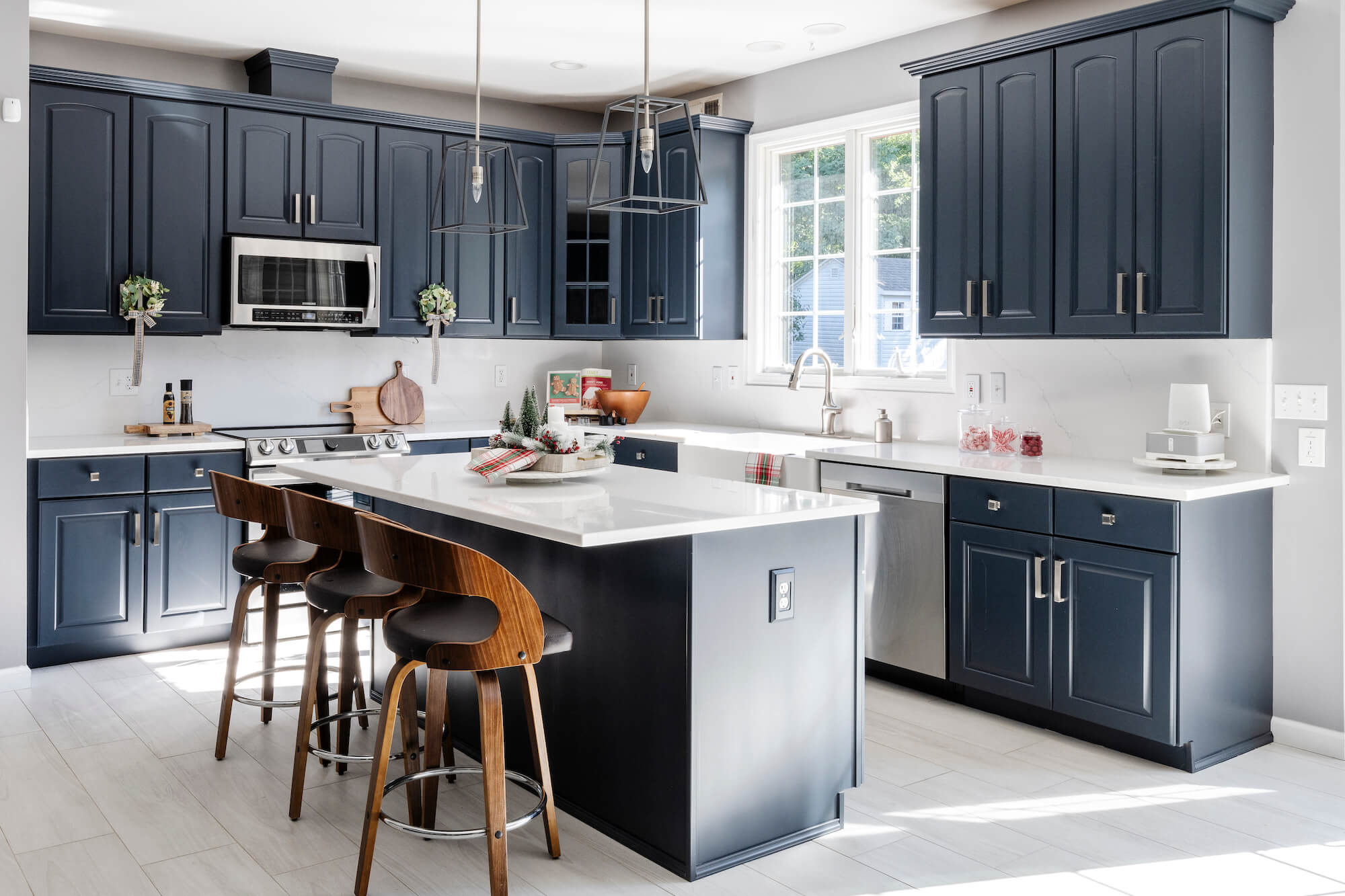
Introduction
Updating your kitchen or bathroom can make a big difference in how your home feels. Cabinets are one of the first things people notice, and over time, they can appear worn, outdated, or simply tired. Instead of replacing them completely, a professional painting service can give them a fresh look efficiently and affordably.
This guide explains the key aspects of selecting a top-rated cabinet painting service in the Greater Chicago area and what you should know before hiring one.
Why Cabinet Painting is Worth Considering?
Many homeowners consider replacing their cabinets when they start to show signs of wear. However, painting cabinets is a practical alternative. It is usually faster, less expensive, and can completely change the look of your kitchen or bathroom.
Painting allows you to choose modern colors and finishes that match your style. Additionally, it can enhance the value of your home without the high cost of full replacements.
Key Aspects of Selecting a Top-Rated Cabinet Painting Service:
Choosing the right service can save you time, money, and stress. A professional service ensures your cabinets look smooth, polished, and last for years. Here are five major points to consider when selecting a top-rated cabinet painting service:
1. Experience and Expertise
Experience matters when it comes to painting cabinets. A company that has been in the business for several years is familiar with the differences between various wood types, laminate, and MDF. This ensures the paint adheres correctly and the finish is smooth.
Experienced painters also understand the importance of preparation and know how to handle tricky spots, corners, and edges. They can spot imperfections in the cabinet surface and fix them before painting, which results in a more professional finish. A team with expertise can also advise you on color choices and finishes based on your home’s lighting and style. Choosing a service with a proven track record gives you confidence that the final result will look polished and last for years.
2. Quality of Materials
The type of paint and primer used will determine how long your cabinets look fresh. Professional-grade paints resist chipping, fading, and moisture damage. This is particularly important in kitchens and bathrooms where humidity, steam, and heat are common.
A top-rated service will use primers that seal the cabinet surface and paints that provide a smooth, durable coat. They may also use specialty coatings designed for high-traffic areas. Choosing high-quality materials may cost a little more upfront, but it saves money in the long run because the finish lasts longer and looks better. Some companies also offer eco-friendly or low-VOC paint options, which are safer for your family and better for the environment.
3. Proper Preparation
Preparation is one of the most critical steps in cabinet painting. This includes cleaning, sanding, and priming the cabinets before applying paint. Top-rated services also remove all hardware, protect surrounding surfaces, and tape off areas to avoid accidental splashes.
Proper preparation prevents peeling, uneven color, and a finish that doesn’t last. Some services even use deglossing techniques or chemical strippers for older cabinets to ensure the surface is perfectly ready for painting. Skipping these steps often leads to frustration and additional costs, as the paint may not adhere properly or chip easily. Thorough preparation shows professionalism and makes a big difference in the final appearance.
4. Customization Options
Color and finish options allow you to personalize your cabinets. Whether you want a classic white, a bold navy, or a neutral gray, a professional service will guide you to the right choice for your home. They can also offer different finishes like matte, semi-gloss, or glossy, depending on your preference.
Some services offer advanced options, such as two-tone designs, ombre effects, or color matching with countertops and walls. Customization also includes hardware replacement suggestions, like new handles or knobs, to match your newly painted cabinets. This attention to detail ensures that your kitchen or bathroom looks complete and well-coordinated.
5. Reputation and Reviews
Experience matters when it comes to painting cabinets. A company that has been in the business for several years is familiar with the differences between various wood types, laminate, and MDF. This ensures the paint adheres correctly and the finish is smooth. Experienced painters also understand the importance of preparation and know how to handle tricky spots, corners, and edges.
They can spot imperfections in the cabinet surface and fix them before painting, which results in a more professional finish. A team with expertise can also advise you on color choices and finishes, tailored to your home’s lighting and style. Choosing a service with a proven track record gives you confidence that the final result will look polished and last for years.
Overall Takeaway!
Updating your cabinets doesn’t have to be stressful or expensive. By selecting a top-rated cabinet painting service in the Greater Chicago area, you can give your kitchen or bathroom a fresh, modern look that lasts.
Focus on experience, material quality, preparation, customization options, and reputation when making your choice. For homeowners seeking professional results and expert service, Marc Poulo’s Painting provides trusted cabinet painting solutions that bring new life to your home.
-
Business2 years ago
Cybersecurity Consulting Company SequelNet Provides Critical IT Support Services to Medical Billing Firm, Medical Optimum
-
Business2 years ago
Team Communication Software Transforms Operations at Finance Innovate
-
Business2 years ago
Project Management Tool Transforms Long Island Business
-
Business2 years ago
How Alleviate Poverty Utilized IPPBX’s All-in-One Solution to Transform Lives in New York City
-
health3 years ago
Breast Cancer: The Imperative Role of Mammograms in Screening and Early Detection
-
Sports3 years ago
Unstoppable Collaboration: D.C.’s Citi Open and Silicon Valley Classic Unite to Propel Women’s Tennis to New Heights
-
Art /Entertainment3 years ago
Embracing Renewal: Sizdabedar Celebrations Unite Iranians in New York’s Eisenhower Park
-
Finance3 years ago
The Benefits of Starting a Side Hustle for Financial Freedom































